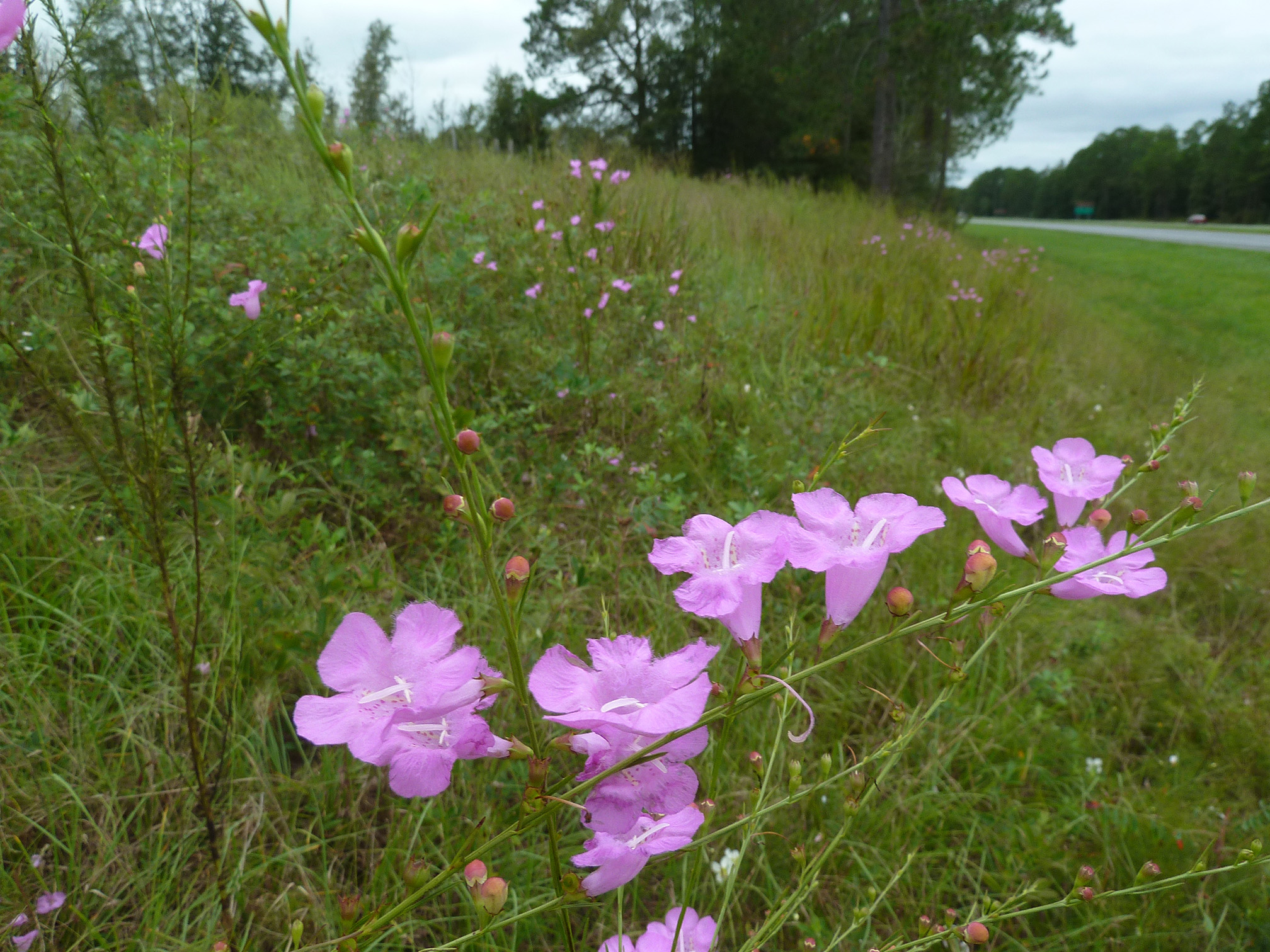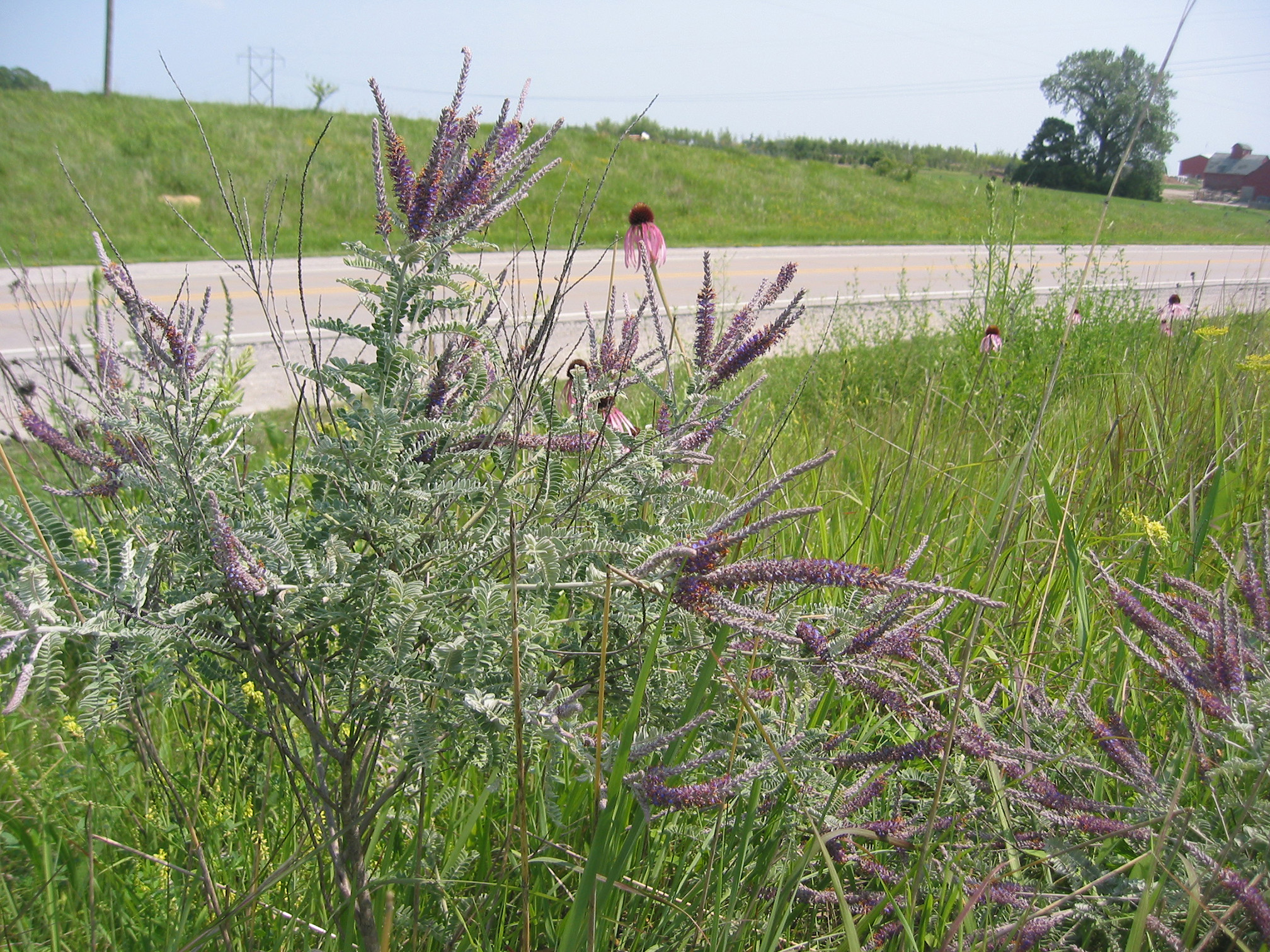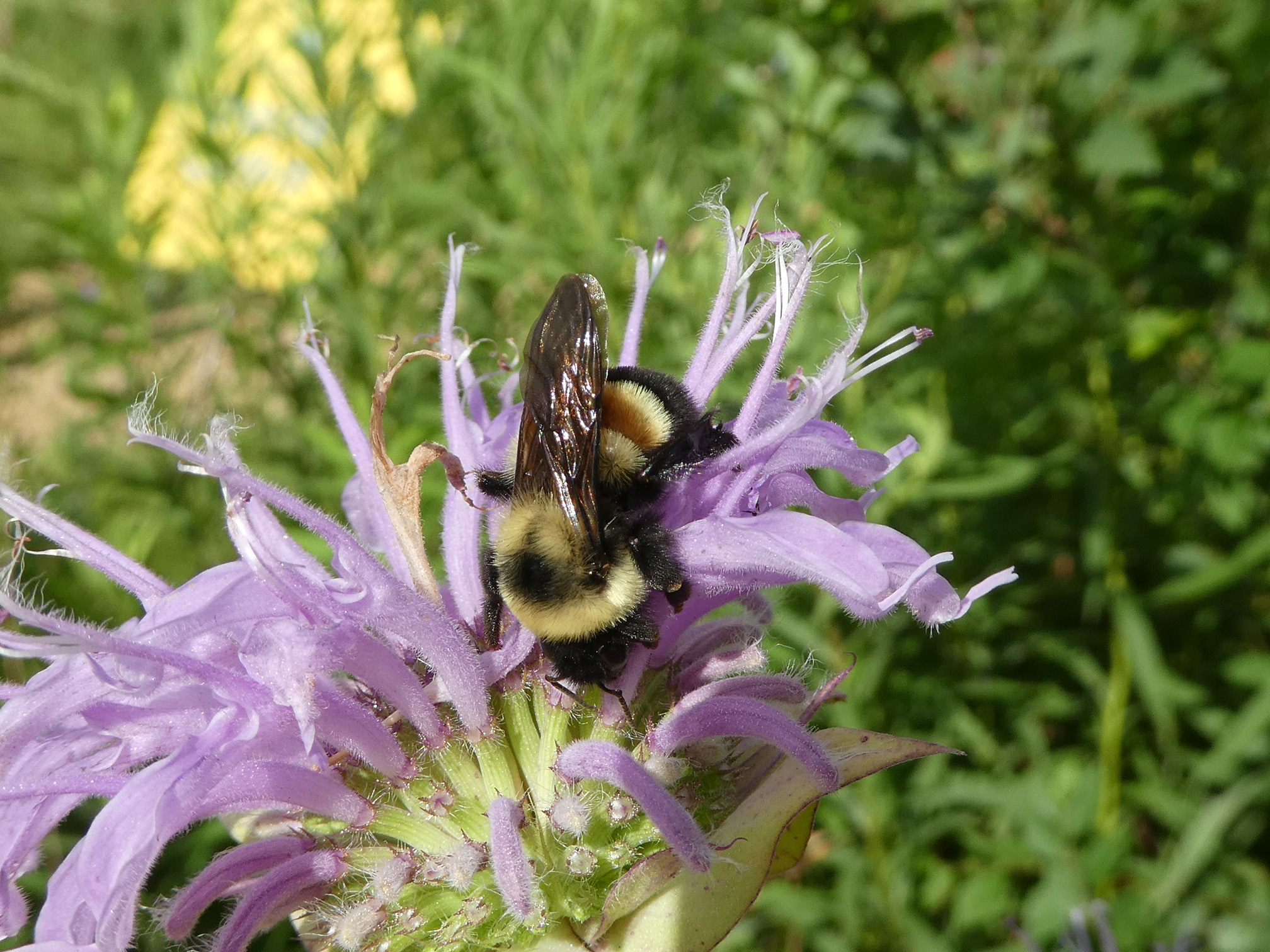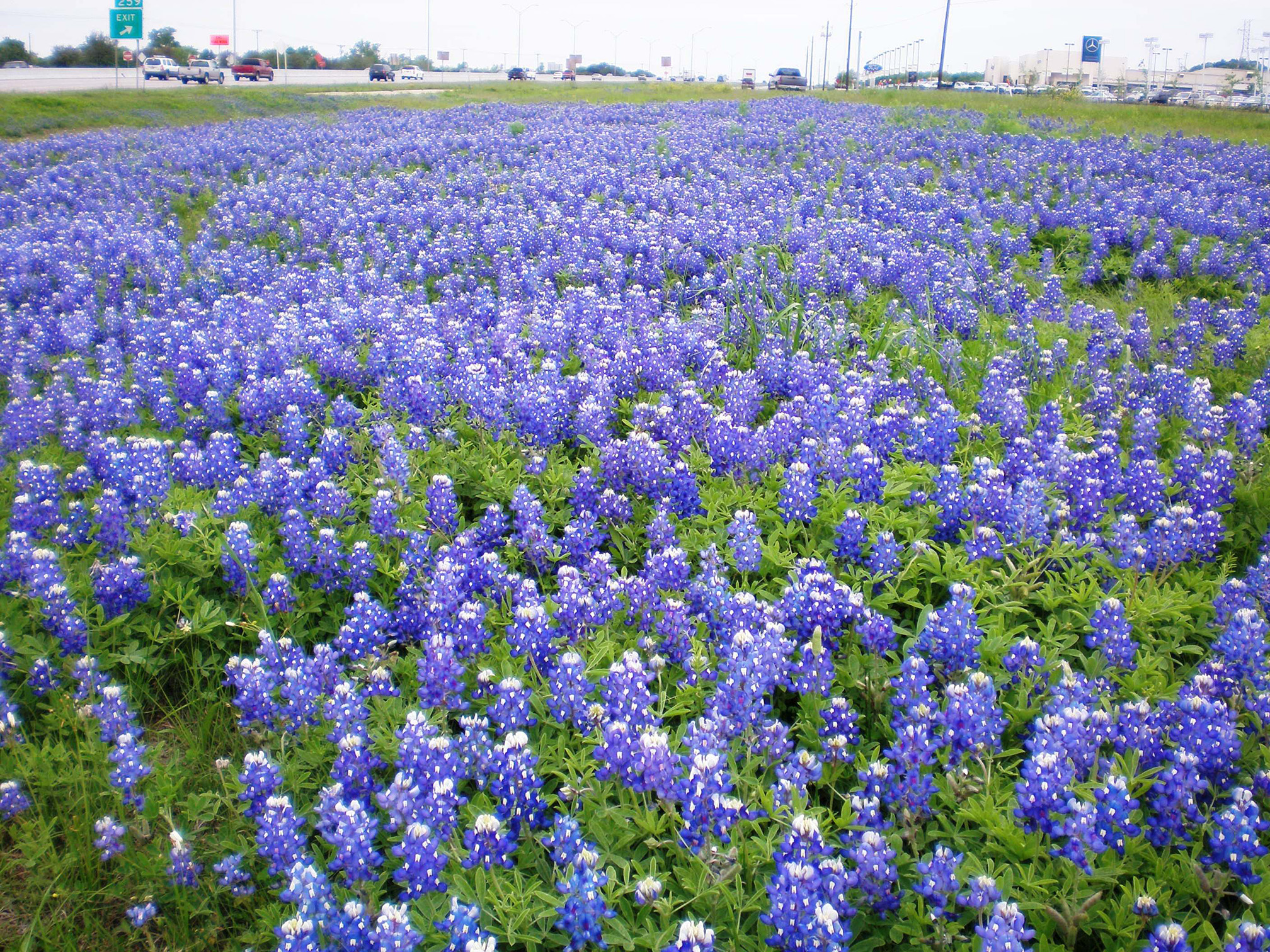Roads have the potential to fragment habitat, separating plants and animals from one another, as well as to destroy habitat and increase invasive plant species, pollution, and erosion. New roads, especially those through natural areas, can have adverse effects on the wildlife around them. However, roadside vegetation can help to mitigate some of the negative impacts of roads. The management of vegetation along existing roads can increase habitat diversity and provide connectivity to habitat fragments in agricultural and urban landscapes.

False foxglove growing beside a Florida highway. Roadside habitat can be especially valuable as a means to increase habitat connectivity in the landscape. (Photo: Eleanor Dietrich.)
In some places, roadsides are home to intact native plant communities that can no longer be found in surrounding lands. Searching for prairie remnants in some parts of the Corn Belt in the Midwest, for example, can mean scouring roadsides and railroad rights of way. In heavily altered landscapes, even those roadsides without intact native plant communities can be the only semi-natural habitat present. For some listed or imperiled species of pollinators, roadsides include some of the last remaining patches of their habitat.
Roadsides provide pollinators with food, breeding, nesting opportunities, as well as connectivity to other habitat. Pollinator diversity can be high in roadsides, with bee and butterfly communities that include a significant portion of the species found in the region, both common species as well as rare ones. State Departments of Transportation (DOTs) manage substantial amounts of land and associated natural resources across North America, and these acres hold the potential to create a network of habitats to support pollinators across urban and rural landscapes.

Roadsides are among the few remaining places to find lead plant and other prairie species in Iowa. (Photo: Maria Urice, Iowa Living Roadway Trust Fund.)
A number of state DOTs have an interest in managing roadsides to support pollinators, but as more species of pollinators become listed or are being considered for listing under the Endangered Species Act (ESA), DOTs also want regulatory certainty. The Xerces Society, in collaboration with the consulting firm ICF, is working to fill this need in the form of a series of 16 regional handbooks that provide the DOTs and other roadside managers with guidance on conservation actions to support pollinators and ESA compliance options. In addition to information on maintenance and revegetation practices that support pollinators, the handbooks also contain a series of region-specific profiles of imperiled pollinators. These profiles summarize what is known about the life histories of these species, which can aid in improving management for roadsides where they may occur. Conservation actions such as adjustments to mowing schedules, targeted herbicide use, and including key native plants in revegetation plans, implemented in association with appropriate ESA compliance strategies, can provide benefits to at-risk pollinator species and contribute to species recovery, while reducing future regulatory uncertainty and reducing the potential for a future listing.

Recently listed as endangered under the Endangered Species Act, the rusty patched bumble bee is one of a number of imperiled pollinators that use roadsides as habitat. (Photo: Xerces Society / Sarah Foltz Jordan.)
This work is funded under the National Cooperative Highway Research Program, a program operated by the National Academy of Sciences Transportation Research Board. The National Cooperative Highway Research Program itself is funded by state DOTs, and peer review and input is a key aspect of research projects within this program.
Our project has been informed by two sets of surveys. In one, we reached out to leading pollinator and roadside revegetation researchers from across the U.S. to identify the relative benefit of specific conservation actions for imperiled pollinators and for input on the opportunities for DOTs to implement practices that support pollinators. The second survey went to DOT staff around the country, and focused on understanding current practices that may benefit pollinators and barriers to implementing additional actions.
Input from DOTs will also come later this autumn, when we will hold a workshop where we will discuss the handbooks and DOTs will exchange information about successes and barriers regarding roadside pollinator habitat in their states. We aim to have the handbooks and associated tools published in 2022.

Wildflowers along roadsides are a component of tourism in some states, such as in Texas where bluebonnets are celebrated as the state flower. (Photo: Texas Department of Transportation.)
As managers of millions of acres of land, DOTs have an opportunity to make a significant difference for pollinators by considering their needs when managing roadside vegetation or revegetating land. In addition to benefits to pollinators, roadside habitat is also valuable in many other ways. Roadsides with healthy native plant communities can better resist invasion by noxious weeds and are more resilient to a changing climate, erosion control and water infiltration are improved, carbon sequestration is higher, more ground nesting birds and other small wildlife are supported, and states have a way to showcase local natural heritage and beauty. The benefits of native plants and diverse plant communities on roadsides extend well beyond the roadside itself. Roadsides are not meant to be a substitute for natural areas or other protected habitat. Yet they play an important role in landscapes, and can be an asset to pollinators, to DOTs, and to communities.
Further Reading
Learn what you can do to Bring Back the Pollinators and take the Pollinator Protection Pledge.
Find information about Rethinking Pesticide Use in Yards & Gardens
The Pollinator Conservation Resource Center contains a wealth of information about how to help.
For farmers and food companies: Bee Better Certified.
For towns, cities, and colleges: Bee City USA & Bee Campus USA.
Participate in community science with Bumble Bee Watch.





